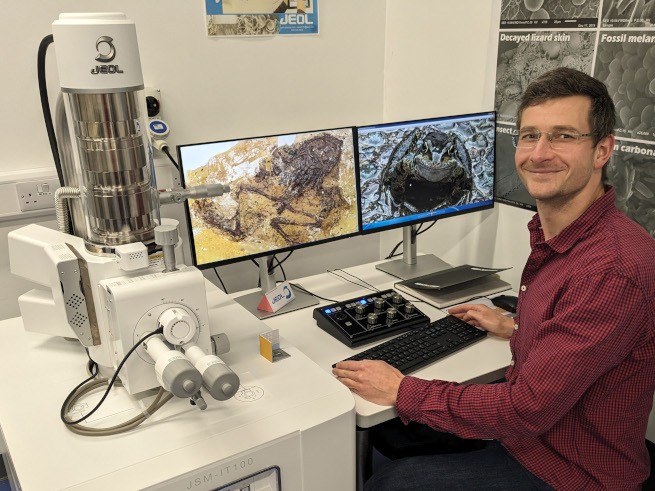According to lead author Daniel Falk of UCC, the frogs’ skin is replicated in the mineral calcium phosphate – which helped fossils survive for millions of years.
A team of palaeontologists led by scientists based at University College Cork (UCC) has unearthed the mystery behind the remarkable level of preservation of frog fossils first discovered a century ago.
Using novel high-precision scientific methods not available in the early 20th century, such as scanning electron microscopy, synchrotron-x-ray analyses and infrared spectroscopy, the team was able to study the 45m-year-old fossils from the Geiseltal site in central Germany in unprecedented detail.
“The quality of preservation of the fossil frog skin is amazing – even subcellular structures, such as collagen fibres, are preserved,” said Daniel Falk, a PhD researcher at UCC and leader of the study published today (23 April) in Scientific Reports.
According to Falk, the skin of the frogs is replicated in the mineral calcium phosphate, which helped it survive for millions of years.
“The preservation of the skin is so good that we can even work out the habitat of the fossil frogs,” he explained. “The preserved skin shows adaptations to prevent drying out, which suggests that these fossil frogs actually spent most of their time on land.”

Daniel Falk looking at images of the frog fossils. Image: UCC
Falk conducted the study with Prof Maria McNamara, also from UCC, and a group of scientists from Ireland, Germany and the UK. It is part of a research co-operation between UCC, Martin-Luther-University Halle-Wittenberg, Natural History Museum Bamberg and University of Oxford.
McNamara, senior author of the study – which was partly funded by the Irish Research Council – said that fossil soft tissues often reveal “hidden” information about the biology of animals.
“We discovered that the fossil frog skin is preserved in the same way as fossil frogs from other sites in Europe,” she said.
“This discovery is very exciting because it overturns scientific opinion that has lasted for almost 100 years. What’s more, the repeated pattern of fossil preservation tells us that frogs evolved special adaptations to life on dry land over 45m years ago.”
The research highlights the usefulness of historic fossil collections and the need to re-evaluate historic specimens using modern techniques. Other backers of the study include the European Research Council and the International Association of Sedimentologists.
Find out how emerging tech trends are transforming tomorrow with our new podcast, Future Human: The Series. Listen now on Spotify, on Apple or wherever you get your podcasts.

